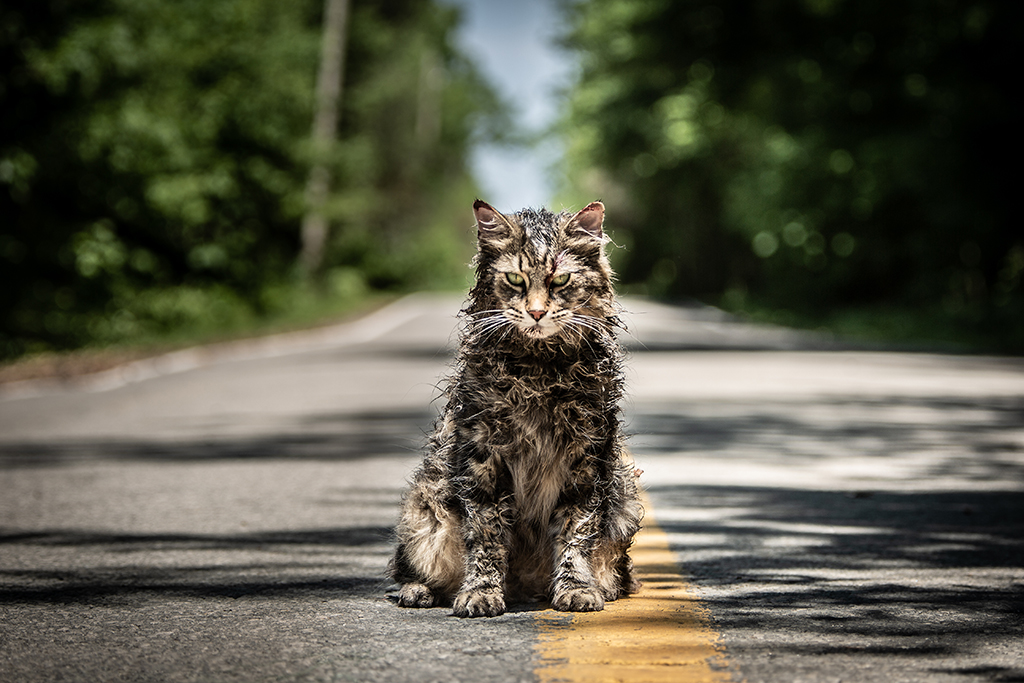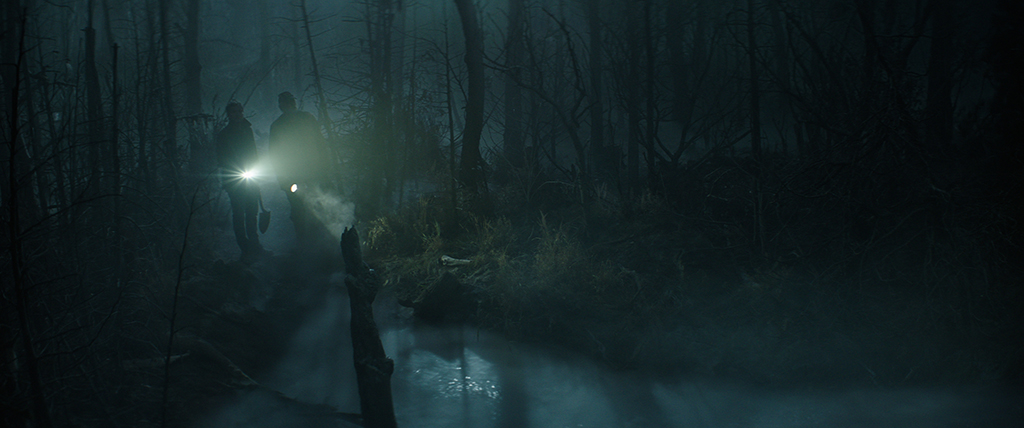By TREVOR HOGG

By TREVOR HOGG

Ever since filmmaker Brian De Palma directed Carrie in 1976, there has been a long-standing love affair between Hollywood and prolific horror author Stephen King that has resulted in over 60 big-screen adaptations. For the second time, Pet Sematary gets the cinematic treatment under the direction of Kevin Kölsch and Dennis Widmyer, the duo previously responsible for Starry Eyes and Absence. Recreating the world where a mysterious forest burial ground in rural Maine reanimates the dead with demonic consequences required the assistance of Mr. X on 400 shots focusing mainly on digital set extensions as well as a dramatic road accident.
Mr. X VFX Supervisor Damien Hurgon was involved with the two months of prep along with the principal photography in Montreal before overseeing the post-production process, while colleague VFX Producer Mike DiCarlo facilitated the necessary logistics, budgeting and studio relations needed to complete and deliver work on time.



“We expected a lot of work to do on the cat, which is one of the main characters. It actually ended up not requiring very much work. … The bigger effects were environment builds for the forest and burial ground which were a mix of 3D and 2.5D. It was interesting because we were trying to find a balance between this creepy supernatural world and photo-realistic live-action visual effects.”
—Mike DiCarlo, VFX Producer, Mr. X

“When starting the project, we expected a lot of work to do on the cat, which is one of the main characters,” notes DiCarlo. “It actually ended up not requiring very much work. We fixed a few continuity issues and made them more or less gory in a few places. The bigger effects were environment builds for the forest and burial ground which were a mix of 3D and 2.5D. It was interesting because we were trying to find a balance between this creepy supernatural world and photo-realistic live-action visual effects.”
No previs or postvis were created for the production because there was not a lot of CG character animation. “As Kevin and Dennis got into the editing of the film, we got a comprehensive brief on things,” explains DiCarlo. “They sent us some concept art, real-world reference and some pages from the original novel. Stephen King had written some clear descriptions of what some of these environments should look like. We took all of that and did some concept work which was sent back to them, had a dialogue, and eventually got to final version.”


“[Directors Kevin Kölsch and Dennis Widmyer] sent us some concept art, real-world reference and some pages from the original novel. Stephen King had written some clear descriptions of what some of these environments should look like. We took all of that and did some concept work which was sent back to them, had a dialogue, and eventually got to final version.”
—Mike DiCarlo, VFX Producer, Mr. X

Nighttime scenes have advantages and disadvantages. “A lot of detail has to be suggested in there because you don’t want a dark black frame,” states DiCarlo. “You need to have some nuance and depth in the environments. Nighttime movie lighting can be a balance that you need to find as well between a realistic scenario and something that you can still see.” Hurgon worked closely on set with Kölsch and Widmyer, Cinematographer Laurie Rose (Stan & Ollie) and Production Designer Todd Cherniawsky (Splice) to make sure that the visual effects could be integrated with the lighting and photography.
A lot of photogrammetry was taken of the sets and locations in order to reconstruct those environments digitally. “For some of them, like the pet cemetery where the final scene takes place, we had footage shot in a cemetery that had been built on a real location in a forest, and some matched to that on a stage,” states DiCarlo. “We had to reconstruct that environment exactly. We had a bit more latitude in the deep forest and burial-ground settings, which were shot on a stage. A lot of reference was captured in the real forest on location.
 Photogrammetry was taken of the sets and locations in order to reconstruct those environments digitally.
Photogrammetry was taken of the sets and locations in order to reconstruct those environments digitally.
“A lot of detail has to be suggested in [nighttime scenes] because you don’t want a dark black frame. You need to have some nuance and depth in the environments. Nighttime movie lighting can be a balance that you need to find as well between a realistic scenario and something that you can still see.”
—Mike DiCarlo, VFX Producer, Mr. X

“Kevin and Dennis had this idea that after Louis Creed [Jason Clarke] comes back from burying his daughter Ellie [Jeté Laurence], the evil from the pet cemetery follows him, and that’s represented with fog and atmosphere,” remarks DiCarlo. “They wanted it to accumulate as you get to the climax of the film. Some practical fog was shot which we augmented and added in order to get the desired progression of atmosphere and moodiness.” When Louis and Jud Crandall (John Lithgow) walk from the pet cemetery to the burial ground they pass through a bog. “It was shot on a soundstage with a small amount of water, which had to be extended into a large environment with quite a bit of fog.”
Even though the Creed family lives next door to Crandall, in reality the latter house was situated up the street. “We had to marry those two geographically,” reveals DiCarlo. “Damien did a good job because he understood exactly how that geography should work, and on set mocked up all of the angles and how you would see it from different parts of the Creed house. That’s an invisible effect that we had to deploy often because you see Jud coming and going a lot from his house to the Creed house or vice versa. They shot it as though Jud’s house was there, and we added some CG trees and a 2.5D house projection for whenever you would see it. We would put up a bluescreen on set so people knew where it was and to help with keying in some of the trees.


“For the pet cemetery, where the final scene takes place, we had footage shot in a cemetery that had been built on a real location in a forest, and some matched to that on a stage. We had to reconstruct that environment exactly. We had a bit more latitude in the deep forest and burial-ground settings, which were shot on a stage. A lot of reference was captured in the real forest on location.”
—Mike DiCarlo, VFX Producer, Mr. X


“The other big thing we did was the truck crash sequence where it flips over and flies down the road,” notes DiCarlo. “Kevin and Dennis were adamant about shooting that practically. They rigged up a real truck to do the stunt. We were not able to do it on the actual location, so at the end of the shoot we had to go to an airport where a runway was rented for a day and did the stunt there. We had to do a lot of work in post to match the angle and lighting. We rotoscoped elements of the truck flipping over and crashing, and put them into the plates of the road that were reconstructed with 2.5D projections. All of the interaction caused by the truck crash such as debris, cracking of the road, and even the shadows of the trees and the lighting shining through the leaves, were added. It was a tough sell. Those shots took a lot of work, but we retained a lot of the live-action plate.”